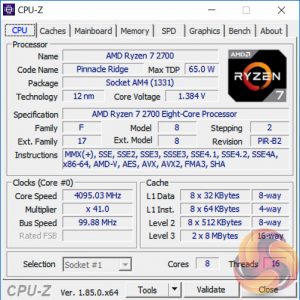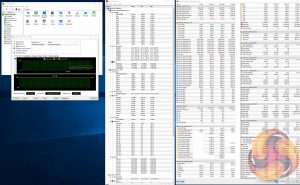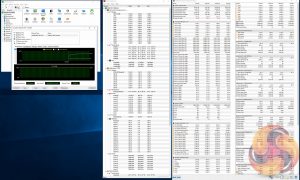Manual CPU Overclocking:
To test the MSI B450 Tomahawk motherboard’s CPU overclocking potential, we set the CPU core voltage no higher than 1.4V and push for the highest stable clock speed. We maintain the DRAM frequency at 3200MHz to take memory stability out of the overclocking equation. Once the highest clock speed for 1.4V is achieved we see if there is potential to reduce the voltage while maintaining system stability.
Overclocking was a straightforward affair, we were able to get the system to boot and be stable at 4.1GHz with 1.375 volts from the UEFI using LLC Mode 5, which was “effectively” 1.35v vCore according to the CPU's self-reporting but 1.375~1.385v according to the motherboard sensors. 4.2GHz was not possible without exceeding 1.4 volts.
Motherboard Sensors
The motherboard has a sensor which it reports as being the MOS, newer versions of HWiNFO also report this as the “VR MOS” sensor – though in our initial testing we were using an older version. Based on running the old and newer versions of HWiNFO side-by-side the “Motherboard” and “Auxiliary” sensors in the screenshots above are the MOS temperature sensor, while AUXTIN2 is the PCH sensor.
At stock load the MOS temperature was 50 degrees Celsius after a 10 minute stress test, at overclocked load it was 76 degrees Celsius. If these temperatures are accurate, they indicate VRM cooling is more than sufficient for ensuring that no overheating occurred. Ambient airflow will still be important, though, to ensure that overheating doesn't occur under prolonged high CPU load in a limited airflow environment.
Overclocked Performance
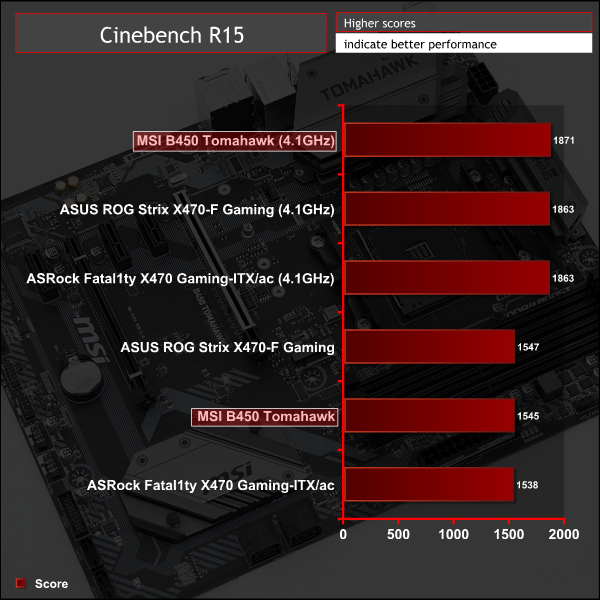
System Power Consumption
We leave the system to idle on the Windows 10 desktop for 10 minutes before taking a reading. For CPU load results we run AIDA64 CPU, FPU, Cache and Memory stress tests and take a reading after 10 minutes. The power consumption of our entire test system (at the wall) is shown in the chart.
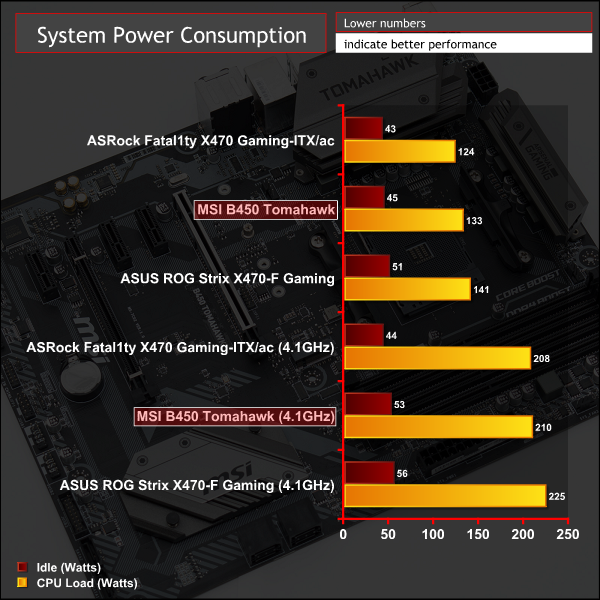
Overclocked performance and general power consumption were fairly standard for the MSI B450 Tomahawk – no surprises here.
12-volt EPS Power Consumption
During the 10-minute stress test as specified above, we record the direct CPU power consumption drawn through the EPS 8-pin socket using modified EPS 8-pin cables that have a Tinkerforge Voltage/Current 1.0 bricklet intercepting and monitoring the power flow from the power supply. That bricklet then reports its data to a Tinkerforge Master Brick. All the data collected by the Tinkerforge Master Brick is passed into an external laptop over a USB connection and analysed in the Cybenetics Powenetics Project software.
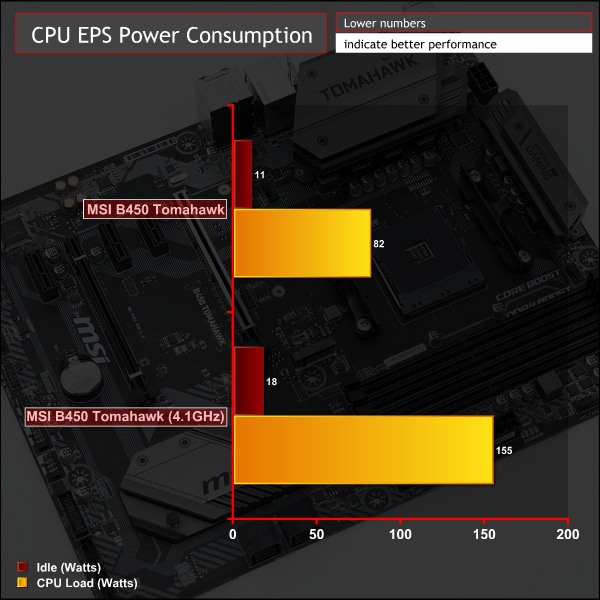
Stock CPU power consumption represents approximately 28% for idle and 69% for load of the system total, when adjusted for PSU efficiency*.
Overclocked CPU power consumption represents approximately 39% for idle and 78% for load of the system total, when adjusted for PSU efficiency*.
*Approximate Seasonic SS-760XP PSU efficiency at:
- 50-watts: 86%
- 125-watts: 89%
- 200-watts: 90%
The Powenetics software provides the power consumption at 12v input (pre-CPU VRM), and the Ryzen CPU provides the power consumption (CPU Package Power) after the CPU VRM has translated the power into a useful format (post-VRM). Based on this we can provide a rough estimate of VRM efficiency and “wasted” energy that likely translates into heat.
- Stock: 77-watts reported by CPU, 82-watts recorded, approximately 94% efficient and 5-watts of heat output.
- Overclocked: 134-watts reported, 155-watts recorded, approximately 86% efficient and 21-watts of heat output.
 KitGuru KitGuru.net – Tech News | Hardware News | Hardware Reviews | IOS | Mobile | Gaming | Graphics Cards
KitGuru KitGuru.net – Tech News | Hardware News | Hardware Reviews | IOS | Mobile | Gaming | Graphics Cards
